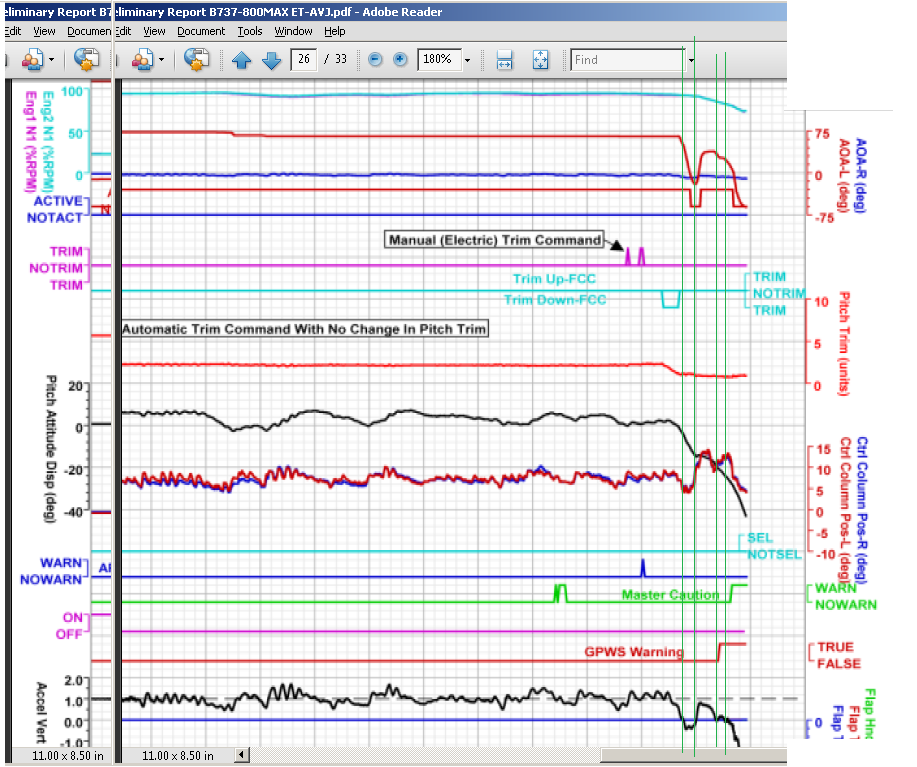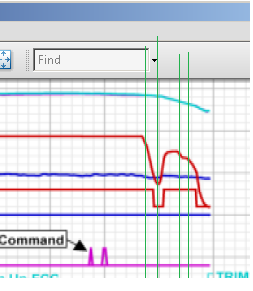I offer an explanation for the behaviour of the Left hand AoA indication throughout the flight.
If the vane had been lost the AoA sensor would become unbalanced about its usual axis of rotation. The internal balance weight** would then cause the axle to be subject to movement when the aircraft transitioned from +g to -g. +g would cause the indication of +AoA. (If I have got this the right way round

Looking at the FDR traces it can be seen that this appears to be the case. I have drawn four green vertical lines to indicate the transitions from +g to -g and vice versa. In each case they appear to align with a change in the direction of movement of the sensor in the correct sense. Remember that the data consists of discrete samples and we do not know the sample rate and I am assuming that any small discrepancies are due to errors introduced by the sampling.
I have (rather crudely) chopped out a period in the middle of the chart so that it is a bit narrower so that the scale markings can be easily seen. The horizontal blue line in the "g" section of the chart is coincidentally exactly on 0g.
It therefore seems quite likely that the vane was lost or perhaps damaged soon after take off, perhaps by a bird strike or otherwise. Note however that if the vane had been bent back its balance would be moved in the other direction and its aerodynamic influences would still have been felt so I think that the best conclusion consistent with the data is that the vane was lost.
** A post on pprune regarding this incident showed an exploded view of the AoA sensor and it featured an internal balance weight. Unfortunately I cannot recall where it was now.

